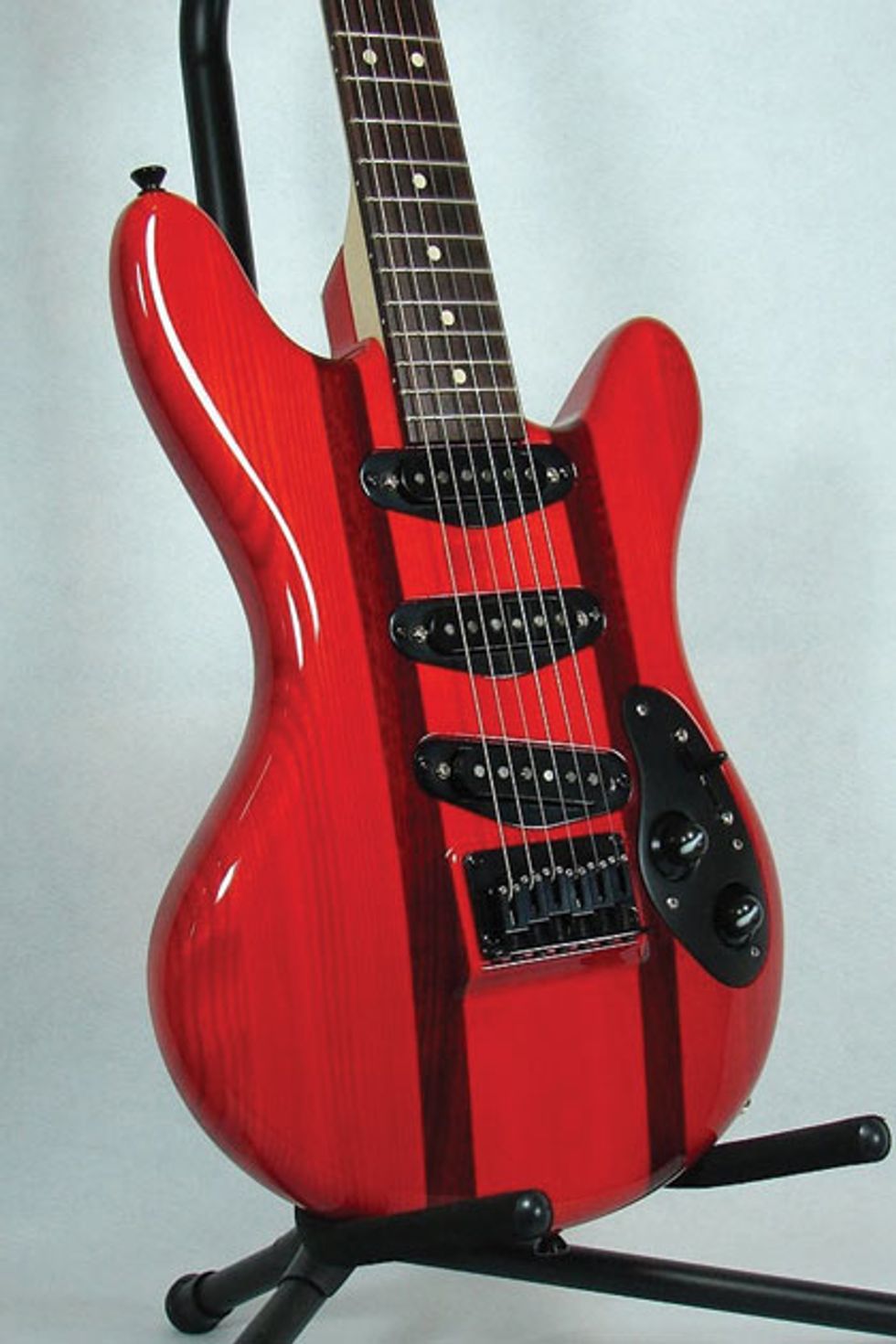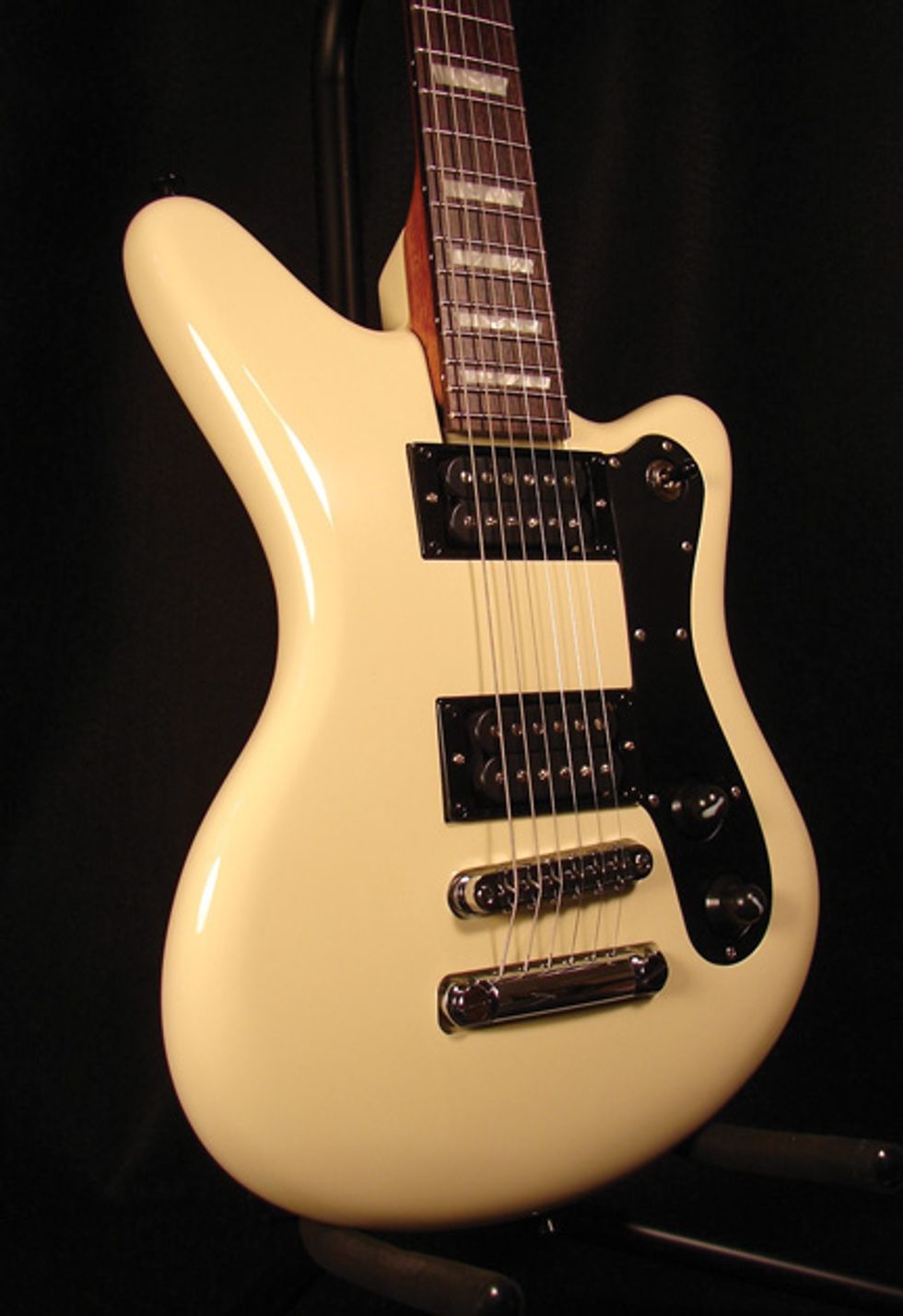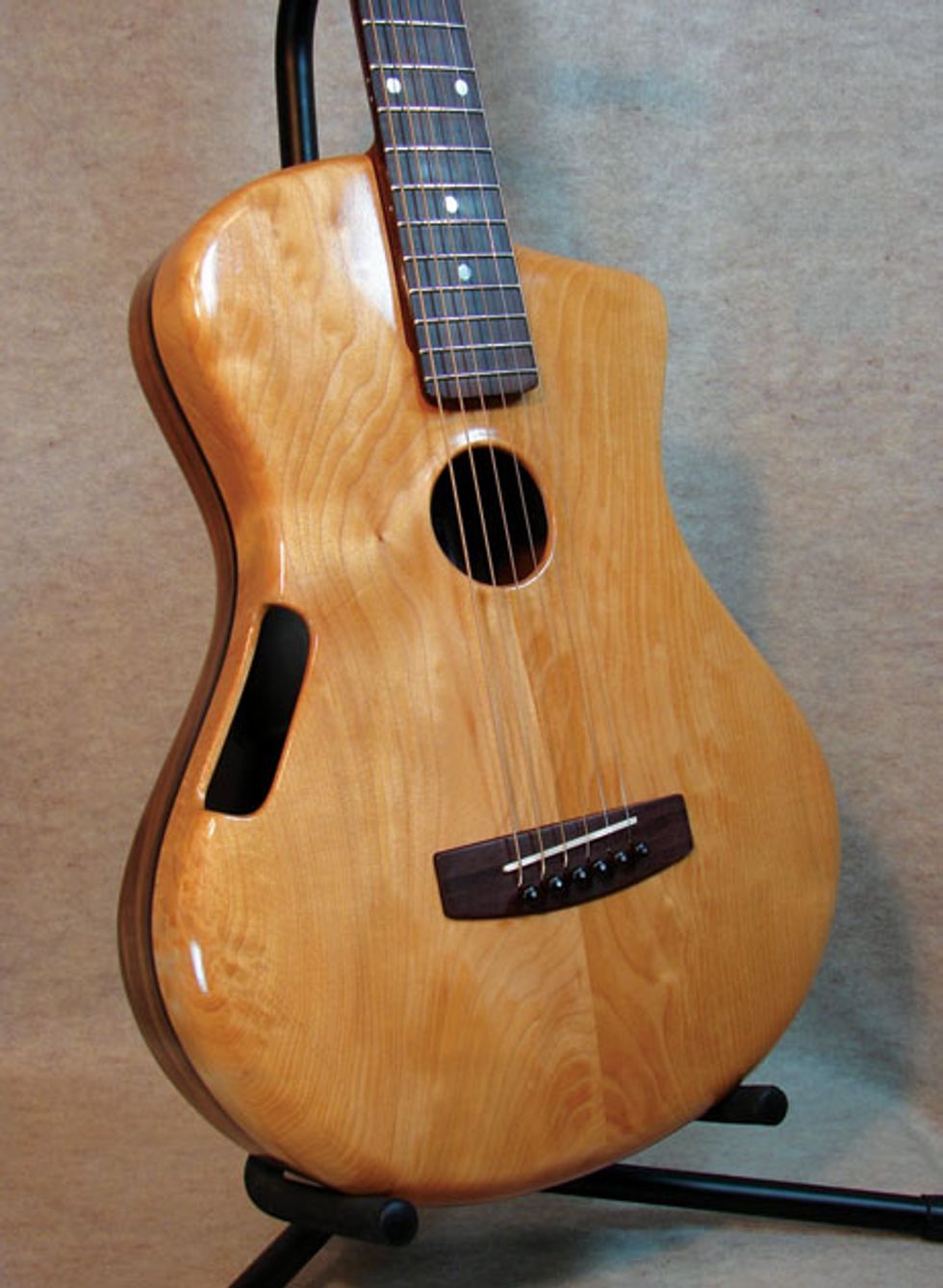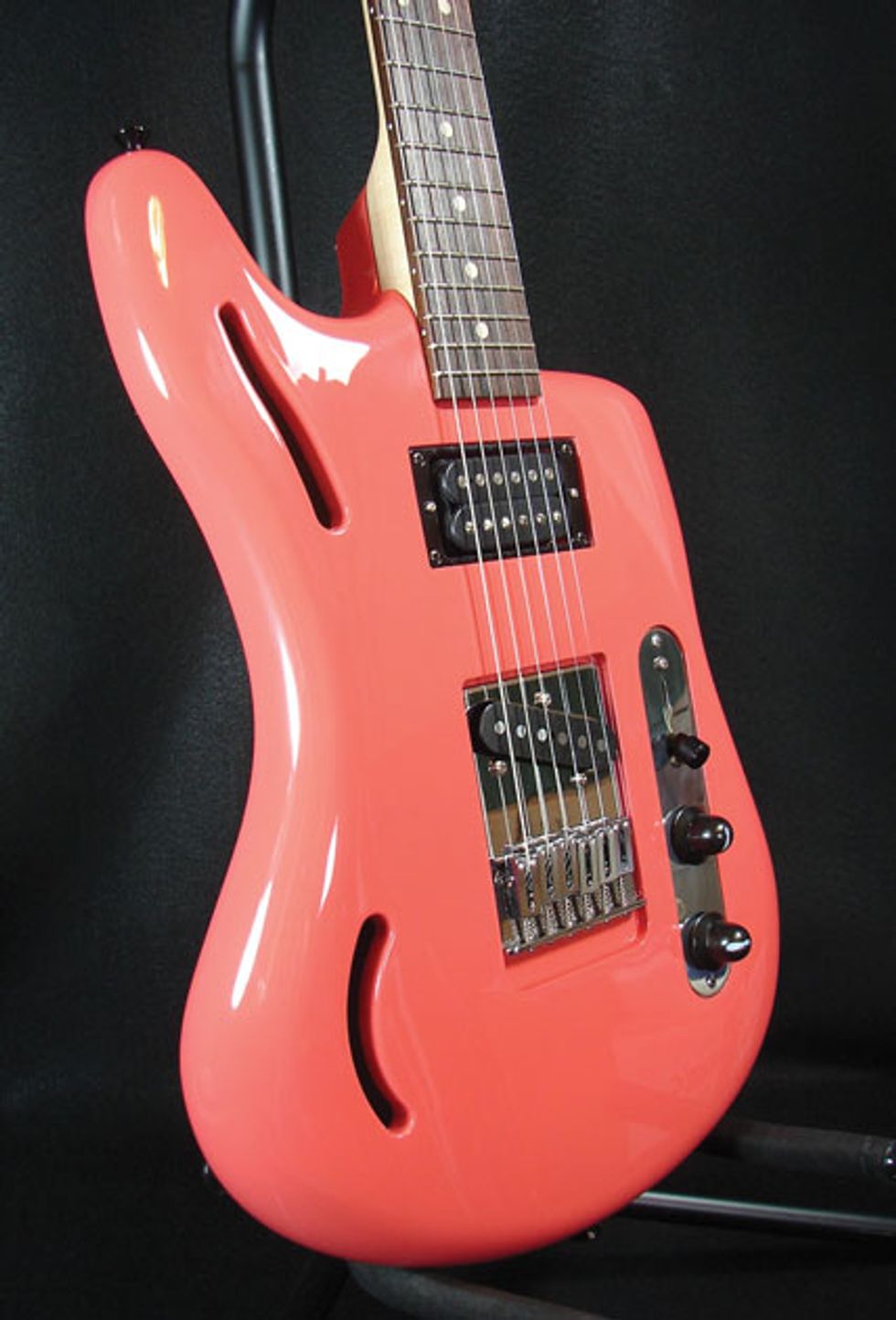BB (Back Bender)
There may be tastes of a Les Paul or an SG with the Tune-o-matic bridge and dual-humbucker configuration, but the BB exudes a vibe all its own. This crème-finished BB has a chambered alder body with a maple spine, though an ash body for those who prefer a natural finish is also available. The bolt-on mahogany neck is capped with a pearloid-inlayed East Indian rosewood fretboard. The hardware appointments are all courtesy of Gotoh, and the BB is powered by a DiMarzio DP191 Air Classic in the bridge and a DP190 Air Classic in the neck.




“Modern guitars for modern times,” is a fitting mission statement for Jeff Kosmoski’s KOZM Guitars. One glance at any of his ergonomic instruments and it’s quickly apparent that the luthier isn’t interested in producing modern-day versions of guitars that came on the scene 50-plus years ago.
The self-taught builder is a mechanical engineer with a background in product design and computer-aided design (CAD). He’s played guitar since grade school but didn’t always want to be a luthier. “The idea of actually making my own guitar seemed kind of strange,” he says. “Why spend the time making your own guitar, when you can just buy one and let you focus on the main task—creating new music?”
About six years ago, however, Kosmoski was working at a company with a number of guitarists, some of whom were into kit guitars and making their own bodies. It got Kosmoski thinking: If he could use his background and skills with modern 3-D CAD tools to design and build any guitar he could imagine, what would he come up with?
Some boutique luthiers pride themselves on not using CNC for valid reasons, but Kosmoski embraces the technology for his builds because it allows him to create the instruments he envisions. That is, modern, curvaceous guitars that leave the past behind by moving away from flat, 2-D guitar design rooted in 1950s technology. “Yes, there will always be those who say the old ways are the best ways,” says Kosmoski. “At the end of the day, however, the important question is, ‘Can you make the material do what you want it to do?’ If your vision is limited by your tools, maybe it’s time to try new tools.”
Kosmoski’s isn’t influenced by a specific designer or instrument manufacturer per se, but he does have a design modus operandi. “In general, I’m inspired by people who aren’t afraid of shattering paradigms, people who think way outside the box—Salvador Dali, Jimi Hendrix, Frank Zappa, Nikola Tesla.” He considers Les Paul a visionary and says, “I’m pretty sure that if he was just coming on the scene today, he’d be using CAD and a computer-controlled router to design and build guitars.”
Kosmoski builds both electrics and acoustics, and doesn’t necessarily have a model he considers his signature or one he’s most pleased with. “To be honest, I’m more interested in my next guitar design—to see what I can come up with and to see how it’s going to sound,” shares the builder. “Although I like building electrics, these days I’m more intrigued with the possibilities in the acoustic guitar realm. In some ways, I’m just scratching the surface of what’s possible. There’s a lot of room in the design space of 3-D, ergonomic, organic acoustic guitars.” Kosmoski contends happy with the way his acoustics sound so far, but added, “I’m eager to see how far I can modify the sound by altering the body geometry, the size and location of the sound holes, the stiffeners, wall thicknesses, and woods.”
“Guitar players are an interesting breed,” says the luthier. “In a realm that’s all about breaking the mold, moving forward, and being innovative, I’m intrigued that so many guitarists feel obliged to reach for the guitars of yesterday. Most builders today are confined to the world of flat. However, the human body isn’t flat. Nor is the natural world in general. I strive to make my guitars as ergonomic, organic, non-flat, and seductive as possible.”
Pricing and Availability
Kosmoski is currently only selling direct through his website, but hopes to have some of his acoustic models in Portland, Oregon, guitar stores soon. The base price for his guitars is $2,395 for the acoustics and $2,595 for the electrics, and Kosmoski highly encourages customer involvement in the build process. “Because I don't start making the guitar until everything is designed on the computer, I have the ability to take screen images of the design, and email them to the customer,” says Kosmoski. “My CAD software also lets me play with colors and details, so if the customer doesn't like something, we can manipulate the design until we get it right.”









![Devon Eisenbarger [Katy Perry] Rig Rundown](https://www.premierguitar.com/media-library/youtube.jpg?id=61774583&width=1245&height=700&quality=70&coordinates=0%2C0%2C0%2C0)




